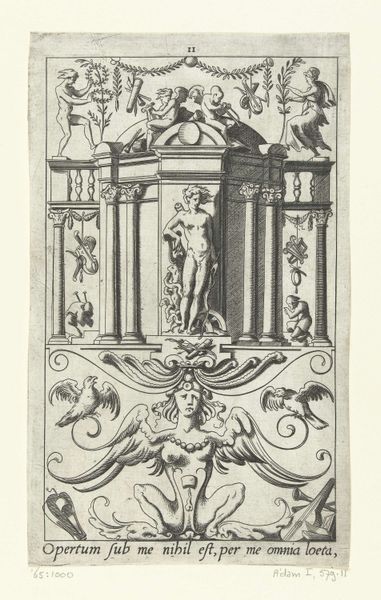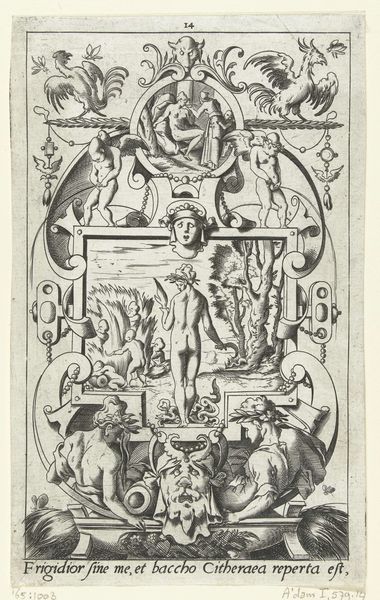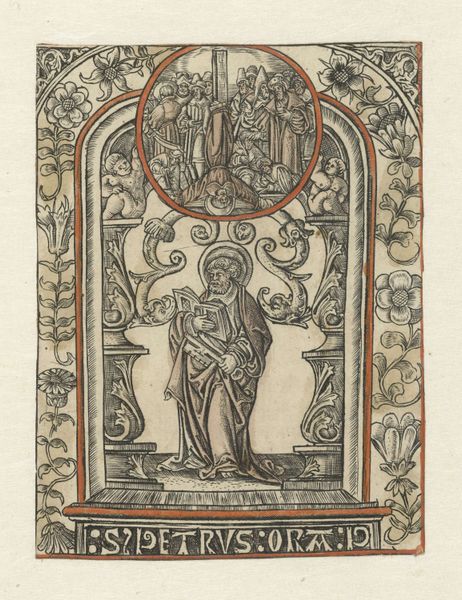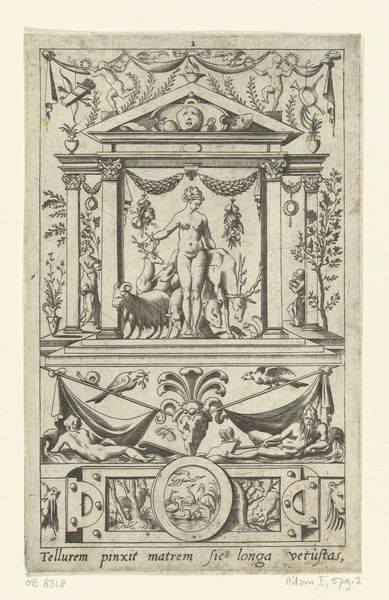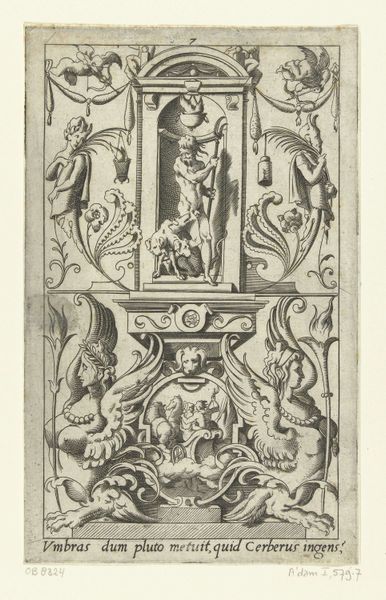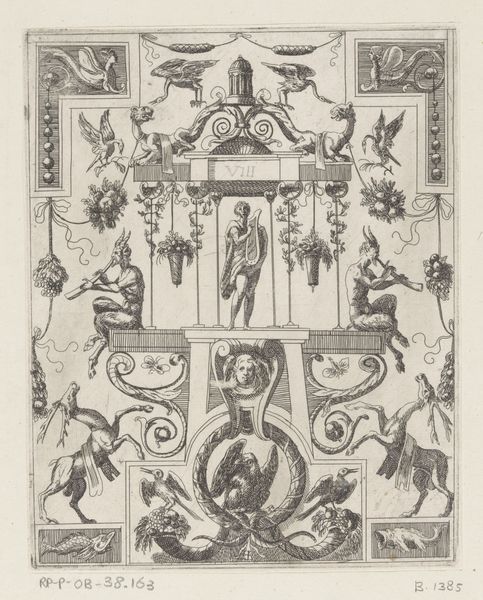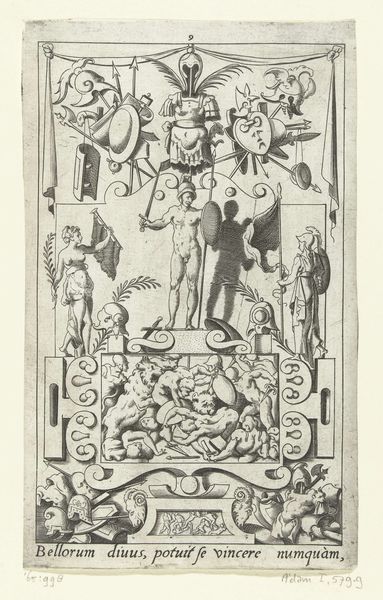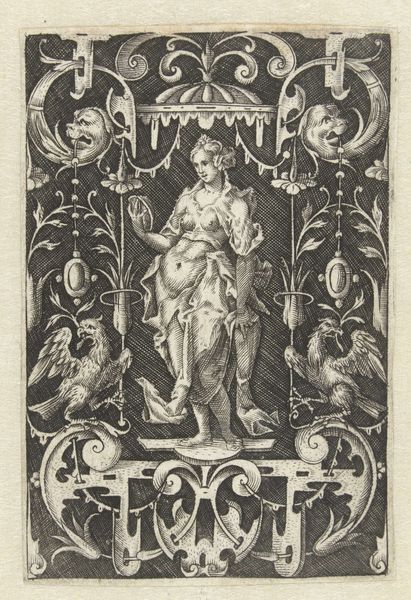
drawing, print, intaglio, paper, ink, engraving
#
drawing
#
pen drawing
# print
#
intaglio
#
old engraving style
#
mannerism
#
figuration
#
paper
#
ink line art
#
ink
#
geometric
#
line
#
history-painting
#
engraving
Dimensions: height 173 mm, width 108 mm
Copyright: Rijks Museum: Open Domain
René Boyvin created this engraving, “Diana, op de rug gezien, met boog en pijlenkoker,” sometime in the late 16th century. Boyvin was working in France during a time of religious conflict and social upheaval, and his work often reflects the complex cultural and political landscape of his era. Here, Boyvin depicts the Roman goddess Diana, a symbol of chastity and the hunt. Yet, this representation complicates any straightforward reading of female virtue. By presenting Diana nude and viewed from the back, Boyvin subtly engages with the male gaze, inviting the viewer to contemplate the power dynamics inherent in the act of looking. The Latin inscription, "Linque arcum, et pharetras, si non es casta Diana," translates to "Give up the bow and quiver, if you are not a chaste Diana", hinting at the consequences for women who defy societal expectations. The ornamental details surrounding Diana, including animal motifs, further enrich the visual narrative, blurring the line between classical mythology and contemporary social commentary. Boyvin’s work serves as a reminder of the enduring power of art to reflect and shape our understanding of gender, identity, and morality.
Comments
No comments
Be the first to comment and join the conversation on the ultimate creative platform.
